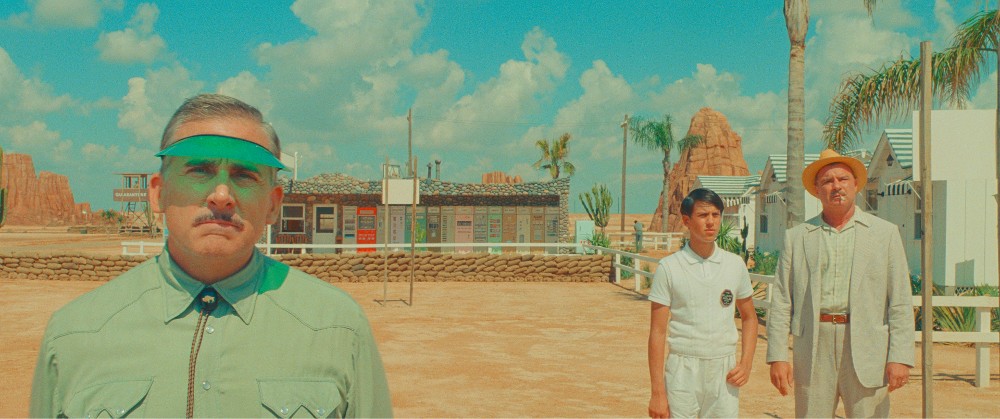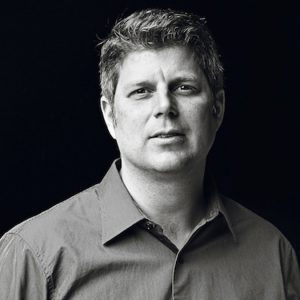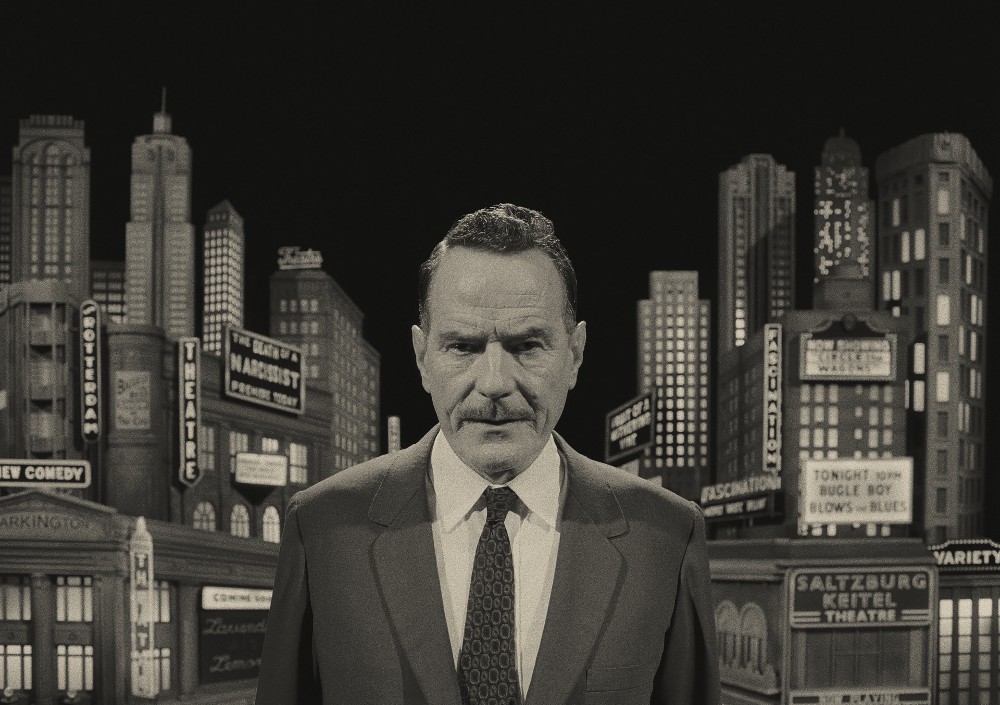
Whenever you watch a Wes Anderson movie, you know you’re in for a visual treat, as he always goes to exotic locations to create jaw-dropping backdrops for his eclectic cast of characters. Working with him hand-in-hand is Production Designer Adam Stockhausen, who has been performing those duties for Anderson since 2012’s Moonrise Kingdom, and who won an Oscar for designing The Grand Budapest Hotel in 2015.
Asteroid City is another master class in production and set design, this one involving a fictitious play taking part in the title town in the middle of the Southwest American desert in the mid-1950s, where a varied group of Junior Stargazers meet for an annual convention with their parents. An event takes place that affects all of them and gets the government involved, but you always have to bear in mind that we’re watching a play, as narrated by Bryan Cranston.
Anderson’s cast is another big one, including regulars like Jason Schwartzman, Edward Norton, Adrien Brody, Willem Dafoe, and Jeffrey Wright, but also some impressive newcomers to Anderson’s world, including Scarlett Johansson, Tom Hanks, Steve Carell, and more. And yet, it’s still the film’s setting and backgrounds that frequently steal scenes from the human actors.
Below the Line has spoken with Stockhausen many times over the years, but not in roughly eight years, so it was good to catch up and learn what went into creating the film’s titular locale for Anderson’s first-ever sci-fi Western.

Below the Line: I was stunned when I learned that you not only production designed Wes’ movie, but you also did the same duties for the new Indiana Jones movie, two movies that seem too different to be designed by the same person.
Adam Stockhausen: And we shot them at the same time. 2021 was a rough year.
BTL: Does Wes usually give you enough advance notice that you can block out time? I know you also did West Side Story with Spielberg maybe around the same time as French Dispatch. You’re able to do two big movies like those at the same time?
Stockhausen: It’s really tricky, and this one was harder than most. But it was because of the pandemic sliding everybody’s schedules around, so we were prepping these things in the fall and winter of 2020 during the lockdown. Wes and James Mangold [Indiana Jones director] were both understanding about the situation and cards on the table about the whole thing, saying, “Well, what do we do? The world is opening back up, and everyone’s going to get going, and these projects are kind of overlapping now, but we’ve got them all figured out. Should we just give it a go?” and everyone said, “Yes,” so we did, but it was a challenging year.
BTL: You’ve been working with Wes for quite a while. How did you first meet Wes or get connected with him?
Stockhausen: I started working with him on Darjeeling Limited – I was the art director. Mark Friedberg designed the movie, and I had been working with Mark in New York on a few films, and Mark had designed Life Aquatic with Steve Zissou, and he was going to India with Wes, and I came along. I was a supervising art director, and my main responsibility on that one was making the train happen.
It’s been a good long time and got to know Wes very well, and then, when Moonrise Kingdom came along, Mark was working on another film. In the interim, I’d done a couple of TV commercials with Wes between those two films, but we’d gotten to know each other better, and I designed these TV commercials for him, so it was a natural transition to start working on Moonrise Kingdom.
BTL: When does he bring you in? Does he casually mention, “This is my next thing,” so you can start thinking about it? Or does he finish the script completely, gives it to you and you start talking about it?
Stockhausen: It’s different, movie by movie. Sometimes the script is done. I think when he sent me the script for Moonrise Kingdom and the script for Grand Budapest Hotel, those scripts were finished. And then sometimes, it’s not done and still in progress. Asteroid City, I read that one when it was three-quarters of the way, something like that.
Sometimes, people ask, “What is production design and what does it mean to do?” It really relates to the question you just asked. I think that there’s some time whether he’s finished with the script or not, where you start asking the question, “So how are we going to do this?” That’s the core question of what a production designer does, and what we do is to break apart that question and say, “Okay, here are some ways that we can do it.”
With this one, that conversation led us all over the place, from exploring the possibility of shooting [it] on location in Death Valley in California, or maybe shooting it in the deserts in Spain where the spaghetti westerns were made. Maybe the whole thing would be a built set, and we would use the backlot in Cinecittà outside of Rome. We explored each one of those things and the early leader was to say, ‘Well, it doesn’t quite work.’ It’s not so much fun doing it as an actual location, when the actual mountains are back there and the road is a real road, and you can see off into the distance. It wants to feel and be a set and a built space.
We thought we would build it at Cinecittà on the backlot. It didn’t work out — there was a problem with airplanes flying overhead and making a ton of noise. But we learned some things. We learned that we wanted it to be this artificial space, this built set, and we knew that the sun had to be bright and overwhelming the way that the desert sun in. That gave us a range of places to look. We hit on Chinchón, this medieval town on the outskirts of Madrid.

BTL: I was going to ask about working with Wes’ DP to make sure they have a place for the cameras, but I think the lighting is also crucial to the look of this being a Western, whether it’s having the natural light or whatever they need.
Stockhausen: It’s a huge part of it, and it’s something that we did on this one, because you get a massive balance problem, when the sun is that bright, and you’re in indoor spaces looking out. You get dark inside and you have to balance the light with the outside. Wes wanted to be able to go into these spaces and shoot right away. What we did is we made huge skylights, like in the luncheonette, for instance. It had a roof, and we could just pop all the panels of the roof off, and inside was a giant skylight that we could cover with different levels of silk diffusion.
We could just pop out the panels of the ceiling on the inside and create a massive skylight. We did that idea in all the major interior spaces — in the observatory, in the gas station. Everywhere we went, we were able to take the ceiling off the place and have a huge skylight, and it really worked.
It made this lovely soft light where you got a great balance, and where the outsides were not blowing out. We actually had exposure, so you have those scenes at the counter in the luncheonette, for instance, where they’re drinking the strawberry milk, and the cars are going by outside, and there’s a perfect indoor and outdoor balance, and to have that by manipulating the sun is pretty cool.
BTL: Did it end up being all in one location where you could build it and leave it set-up, or did you have to tear things down to build other locations over the course of the movie?
Stockhausen: No, Asteroid City was a site in this farm field between these two tiny little villages, Chinchon on one side and Colmenar de Oreja on the other side, about five kilometers apart. Right in the middle was Asteroid City, and we controlled the space. We built it, and it stayed perfectly set up and organized for us for the entire shoot. At the end, we took it down, and then, carefully, step by step, returned the fields to their owners, and they planted watermelons, which is what they did in the space before we got there.

BTL: I was thinking more about the offices of the playwright and director, when it steps outside the actual play.
Stockhausen: Oh! Okay, so there are these two towns on the north and south of the town, and the whole rest of the movie is found in between those two places. For instance, there’s a little theater in Chinchón and there’s a little theater in Colmenar. We took both of them over. One of them became the broadcast stage. We ripped out all the seats, and that’s where you see Bryan Cranston introducing the whole thing. That’s in Chinchón. Then the theater in Colemanar, that’s the backstage, where you see Augie step out of the play, and start walking back to the stage. And then, the rest of the backstage worlds were built sets.
There are no soundstages there, but we take all the different spots we can, so we took my set-building workshop and made that a stage. That’s where we did the rehearsal studios in New York, and that’s we did the alley at the end of the film, the conversation across the two fire escapes. That’s where we did the long walk backstage, where Augie goes to speak to the director, to Adrian [Brody].
Those were all at the end of the film; when most of the scenery is built, we start shutting down the construction space, and we built scenery in there. Which is the same thing we did in Moonrise Kingdom. There was a construction shop, and that became our stage at the end of the movie.
The really fun one on this one is there’s a garlic storage warehouse – they grew a lot of garlic around there. It was really a barn, but it was a nice big space, even though it had a little bit of a smell issue — the scent of garlic was strong – but we used that to make the writer’s house, the beachside writer’s cottage where Edward Norton’s character meets with [Jason Schwartzman’s] August Steenbeck.
BTL: I’m always impressed by the exotic locations where Wes goes to make his movies. Rhode Island looked amazing, though I’m not sure if I’d consider that “exotic,” but otherwise, there’s Spain, Germany, Poland, India… As far as someone who’s going to all these places, supposedly with a location manager who knows the area, how do you approach working in a new location and doing what you need to do to find what you need?
Stockhausen: The thing is, with Wes, where the movie is shot so much gets under the skin of the project, and it seeps into the movie and becomes the movie. In Moonrise, shooting in Rhode Island was like that, shooting in India was like that, but it’s not so much of a distant process. Some movies, it is. Some movies, I’ll go with a location manager, and we’ll find a spot and then coming back to the team and saying, like for Bridge of Spies, “You’re not gonna like hearing this, but guess what? We have to add some money in the budget, because I’m taking us all to Poland. That’s where we’re going to do East Berlin.”
Sometimes, it’s like that. With Wes, again, because he wants to find a spot, and he wants to set up a core, a base, a center, and then, we start to find all the other pieces around that center. When we find our Angoulême as the spot where we’re going to make The French Dispatch, that process of finding that place is an early one, and a big process that he’s absolutely involved [with] in every conceivable part of that conversation. We do a lot on the internet at the beginning — we call it Google scouting — but it’s just trying to learn as much as we possibly can about these places before we go, and trying to get as complete a dossier as we can.
It’s been fun when you show up in one place, and you feel like you’ve been there many times, because you’ve walked the streets in Google, and you know how to get around, because you’ve navigated it in the digital map so many times. We really do that and we do a lot of checking and looking, not just saying, “Oh, we like the place,” but shot by shot saying, “This corner could be really good for this scene and this view over this hill could be good for this other piece.”

BTL: When you find a location, how is the infrastructure in terms of being able to get all the equipment and crews to make the movie? I assume there are builders and good construction workers everywhere, but what about the rest of the crew?
Stockhausen: There are great builders in a lot of different places. There were great construction folks in Spain. This fellow, Jose Altique, was our key construction manager, and he’s magnificent and did such an incredible job. We do bring some people. There’s kind of a core group of people that have worked on a bunch of these films together. It’s a bit of a theatre troupe in that you pick up people along the way. I got picked up in India on the Darjeeling Limited. At the same time, Sanjay Sami, the key grip, started working with Wes on Darjeeling in India and has been with him ever since, just like me.
Different people come at different times, so Stéphane Cressend, my supervising art director on this one, he and I worked on one of these TV commercials that I was telling you about, this Softbank commercial that we made with Brad Pitt on the beach in Normandy, and I met Stéphane Cressend, the art director, and then he worked with me as a supervising art director on French Dispatch, and then, came along to Spain to build this one.
Everybody has a story like that, who is on the team, so it’s this core group of people who assemble and reassemble for the different projects, but then there’s a huge, huge group, almost everybody from the local place, doing the construction and the painting and the set dressing and all that.
BTL: I know that Wes probably likes having everything built and be there for the actors to experience, but was anything shot in Arizona even for plates? Are visual effects involved at all, or is it all matte painting and such?
Stockhausen: Not even a lot of matte painting. Most of this movie is physically real. I would have to check with Jeremy to see if we did any plate work on this one at all, but I think there is some sky replacement work, but most of the skies were from our spot, just on better days where the cloud formations were prettier. We did sky plates while we were there, just for the ability to clean up a rain cloud or something that we didn’t like that was coming around. But this one is very much in-camera, but then, of course, we make miniatures too, so a lot of the landscape can become miniature landscape where we’d need pieces.
BTL: I noticed you also got to work with the late great Wes Craven on his last couple movies.
Stockhausen: I absolutely loved Wes Craven. I loved every minute of working with him. Those movies were so much fun, and My Soul To Take was my first designed film. That was when I switched from art directing to production design, and Wes Craven gave me that break.
Asteroid City is still playing in theaters nationwide.





